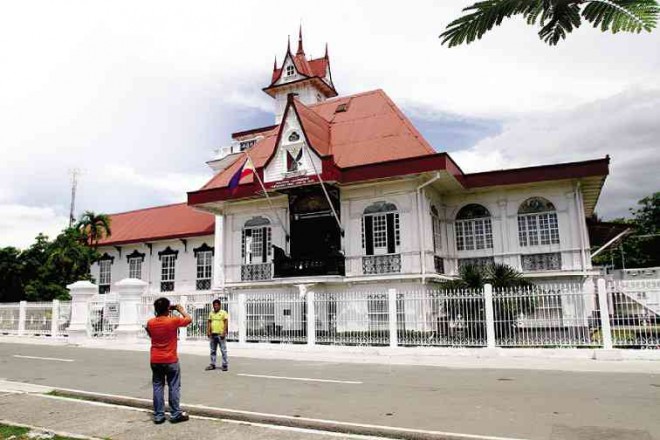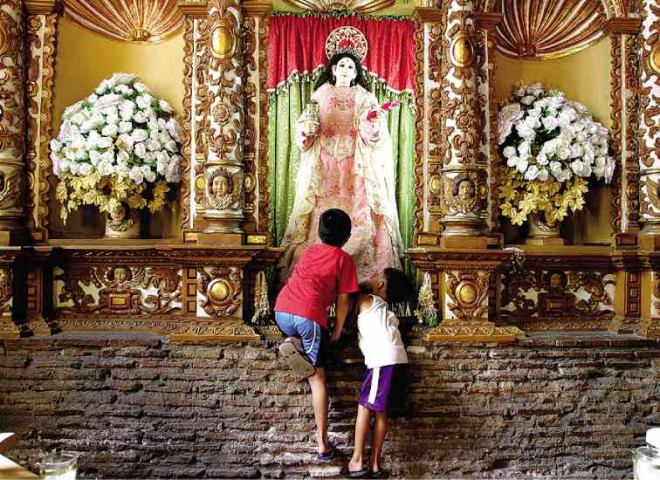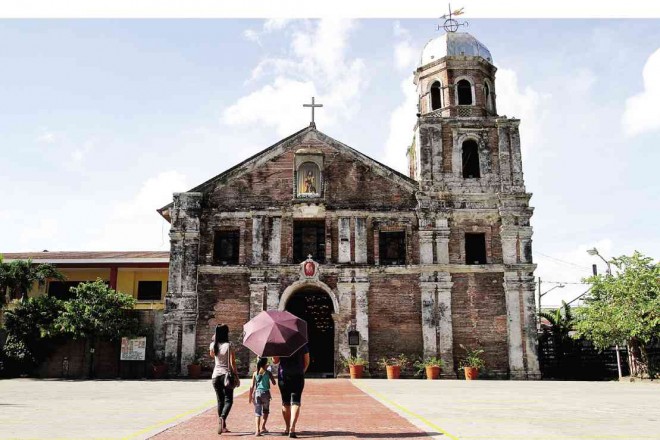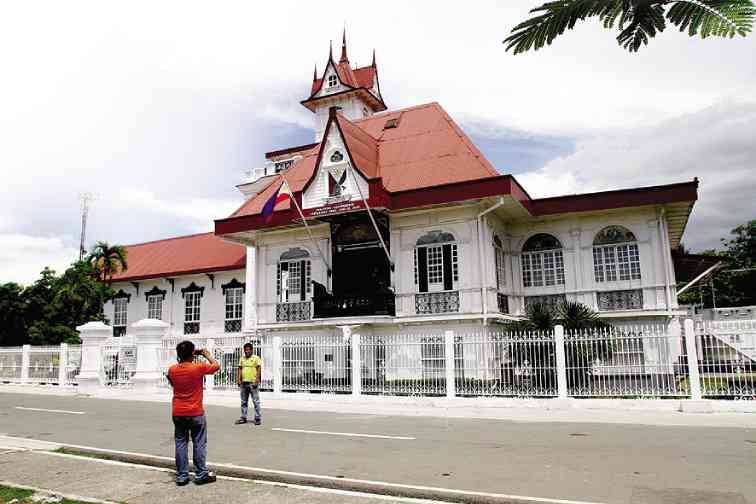
Caviteños take pride in claiming an assortment of titles for their province: Historical Capital of the Philippines, Home of the Brave, Heartland of the Philippine Revolution, Cradle of Noble Heroes.
Some other provinces will, of course, challenge that. If there were Pitong Bayani ng Binakayan or Trece Mártires de Cavite, there were also the 15 Martyrs of Bicol, or the 19 Martyrs of Aklan.
But then, just mention Kawit, Maragondon, Zapote Bridge or Corregidor and you are thrown back to the country’s theater of blood, of mutinies and resistance, revolution and war.
If anything, those titles merely proclaim the red-blooded character of Caviteños. They are the tough guys of the neighborhood.
Some trace this to centuries of interaction of the Tagalogs in this area with the Tausugs, those warrior people of the South—in the seafaring days long before the Manila-Acapulco galleon trade made the hook-shaped peninsula of Tangway the most important seaport of colonial Manila (thereby also engendering the pidgin creole Chavacano).
Established in 1614, Cavite—capital: Imus (de jure); Trece Martires (de facto)—is steeped in history. Even an unlikely corner like Tagaytay, one of the country’s top leisure places, played a significant role in our blood-soaked history.
From the rubble
On Tagaytay Ridge, at the tourist hub One Destination, people bask in the cool climate, world-class cuisine, upscale shops, and the scenic view of Taal Lake and Volcano, clueless about the place’s dark past.
In the late 1930s, during a rash of construction in the area (including Taal Vista Lodge, now Taal Vista Hotel), prisoners of Cavite labored to build that stretch of highway from Silang to the ridge.
Tagaytay’s ridges and forests served as sanctuary for revolutionaries. And it was here where military supplies and personnel were airdropped amid enemy fire for the liberation of Manila.
But history had not been kind to the province. American bombardment at war’s end totally destroyed its fortified port city. Of the city’s eight churches, only an ancient belfry remains.
Cavite’s close proximity to Manila (21 km) helped it readily rise from the rubble. Seventy years after the war, it is now one of the fastest-growing and richest provinces in the country, the most populated, and has one of the highest human-development indexes.
It has 12 economic zones and over 20 major shopping malls. About 90 percent of its 4-million population live in urban areas.
This would seem a paradox—a historical place that’s also highly industrialized and urbanized—perceptible even in the casual blending of historical landmarks and leisure areas, as in the 7 Heroes Monument at Island Cove Leisure Park in Kawit.

Shrines and monuments
Kawit, the original Cavite el Viejo, is the province’s oldest town, established in 1600. Its foundation day, Aug. 1—also the day the 1898 proclamation of Philippine independence from Spain was promulgated; and a day after the fall of Manila in the Spanish-American War, in “the deadliest battle in the Pacific”—has been celebrated for only six years.
“To think that Kawit was established in the 1600s, that’s rather awkward,” says Chit Sambile, municipal tourism officer and a board director of the Cavite Historical Society.
From poblacion to highway, the place is dotted with shrines, museums and monuments of Emilio Aguinaldo, Baldomero Aguinaldo, Candido Tirona, Gregoria Montoya, the Battle of Binakayan-Dalahican.
“I didn’t even know we had a Joan of Arc of Cavite,” Sambile says, referring to Montoya.
The town is noted for local foodstuff such as suman sa Kawit (of Lechon sa Kawit restaurant at Centennial Road) and pancit henoy (of Pandayan ni Lola Meny).
Sambile says her grandfather was Aguinaldo’s cook. The general’s favorites were adobong manok sa dilaw, bibingka, chico.
“Kawit is a one-stop destination,” she says. “A tourist can see it in one afternoon and that’s it. But what we are selling here is not food but history.”
Red-light district
Before going to battle, the general would go to Sta. Maria Magdalena Church to say a novena, believing she was the patroness of the revolution, Sambile says. A tunnel running from behind the altar to his mansion nearby served as escape route.
“That was why every time the Spaniards learned he was in the church, they sent soldiers but couldn’t find him,” Sambile says.
The church, built by the Jesuits in 1737 and dedicated to Our Lady of Loreto, was where Aguinaldo was baptized. His birth certificate is kept on the left side of the altar.
Oddly the church does not face Camino Real but a narrow street, toward the sea. There used to be a port here during the galleon trade, thus the street turned into a red-light district. The Jesuits, believing it would make the parishioners repent, replaced the original patroness with Mary Magdalene.
The people would ask or thank her for a good harvest, their main livelihood being fishing and salt-making. Devotees break into a caracol (religious-dance procession) on her feast day of July 22.
The church is also the centripetal point of a bigger religious celebration, the Maytinis festival, a procession of
carrozas of Biblical characters depicting Joseph and a pregnant Mary’s search for an inn.
The church used to serve as lighthouse for the galleons. As the sea has receded 2 kilometers from the original site of the harbor, the place is now an arid expanse. On a clear day, from the belfry, one can see the Mt. Samat Cross in Bataan.

Odd architecture
Generations of parish priests left only a few traces of the structure’s antiquity. The church was restored in 1990. Except for patches of brick walls, the nave’s first two columns, and a few icons, the interiors are relatively new.
The pulpit was demolished, leaving only marks on the wall. The three retablos were gold-leafed five years ago, costing the parish over P1 million, says Sambile.
The original façade and exterior brick walls are relatively intact, but the bell tower has been installed with a dome wrapped in galvanized-iron sheets then topped with a Victorian weather vane.
A similar odd architectural design characterizes the Aguinaldo Shrine, the general’s mansion where, on June 12, 1898, the Acta de la Proclamación de Independencia del Pueblo Filipino was publicly read from its balcony, the flag unfurled, and the band of San Francisco de Malabon (now General Trias town) played the Marcha Filipina Magdalo.
Built from the original nipa-at-pawid structure in 1849, the house has Hispanic and Edwardian features, including Art Nouveau. It had been renovated several times, so an onlooker cannot quite place its design in terms of architectural style and period.
It was recently refurbished and opened to the public as a proper museum on March 20 this year, two days before Aguinaldo’s 146th birth anniversary.
On June 12, in celebration of Independence Day, the structure blazed with images from our history in state-of-the-art video mapping.
Final hours
There is one place in the province, though, where the general doesn’t seem to be as popular—Maragondon.
It was here where Aguinaldo’s march to Biak-na-Bato in Bulacan started. It was also here where Katipunan founder Andrés Bonifacio spent his final hours.
This mostly forested and mountainous area and protected landscape has destinations like Mt. Marami in Layang Mabilog, a sort of mini Grand Canyon; Poy’s Farm, an organic-farming resort; Pico de Loro’s steeper side.
Formerly a barrio of Silang and once belonging to Bataan, the town was founded in 1727. Its major produce is bamboo, engineered bamboo and bamboo shoots. It has a native rice-based delicacy called tilbok.
In the poblacion is the Teodorico Reyes ancestral house and museum, also known as the Bonifacio Trial House, where Andrés and his brother Procopio were tried by Aguinaldo’s men.
In the church a few blocks away, a small elaborately carved door in the apse, to the right of the high altar, opens to the sacristy where an airless side room served as the cell for the brothers during the trial. Bonifacio’s bed is still here (though only the legs are original).
About four kilometers from the poblacion, on the foothill of Mt. Nagpatong, stands the Bonifacio Shrine and Monument on the spot where the brothers were executed. It is one of the town’s major tourist attractions.
In the deadly political struggle between Aguinaldo and Bonifacio, the townsfolk’s sentiments seem to tilt to the Father of the Revolution.
In praise of Queen
Maragondon Church, built in 1714, stood witness to revolution and wars. Its heavy carved wooden doors are marked with holes from artillery fire.
A church built in 1630 was demolished in the 1640s to prevent it from becoming a fortress of Dutch invaders. The present one is said to be 90-percent original, with no major damage, only exterior walls and doors scarred by bullets.
The three retablos are crammed with 16 icons, many of them relatively new. The antique ones are stored away since several artifacts have been stolen. Of the Stations of the Cross, only one is original. A life-size Crucified Christ is kept behind bars on the left aisle. One notable icon from Belgium is of the Christ Child with a disproportionately big head.
The original wood planks of the flooring have been replaced with stone tiles simulating wood. The front door panels are carved with ornate motifs and ecclesiastical symbols that were used for the teaching of catechism in colonial times.
The townsfolk ascribe the sparing of the church from calamities to Our Lady of the Assumption. Over the sanctuary is the inscription: Astitit Regina a Dextris Tuis Investitu de Aurato Circumdata Varietate. (“The Queen stands at Your right adorned with a variety of gold ornaments.”)
Nuestra Señora de la Asuncion Church has been declared a National Cultural Treasure by the National Museum.
Oldest painting
Looking nondescript but equally important as witness to history is San Agustin Church in Tanza, built in 1839.
On March 23, 1897, a day after their election at the Tejeros Convention in San Francisco de Malabon, Aguinaldo and Mariano Trias took oaths in front of the Holy Cross in the rectory’s hall and assumed office as president and vice president, respectively, of the revolutionary government replacing the Katipunan.
Just as historical but more dazzling is Nuestra Señora de la Candelaria Church in Silang, the oldest in the province. Jesuit missionary and historian Pedro Chirino administered this parish at one time.
Built in 1637, the simple Baroque church startles visitors with its pastel-colored and white altarpiece, positively Rococo. Depicted in intricate relief are the mysteries of the Holy Rosary, guaranteed to keep worshippers’ faith soaring.
More startling is an artifact enshrined in San Roque Church in Cavite City, what is considered the oldest existing dated Marian painting in the country. Installed in 1692 and used to bless the galleons, it is the image of the Nuestra Señora de Soledad de Porta Vaga, the Celestial Guardian and Protector of the province.









































